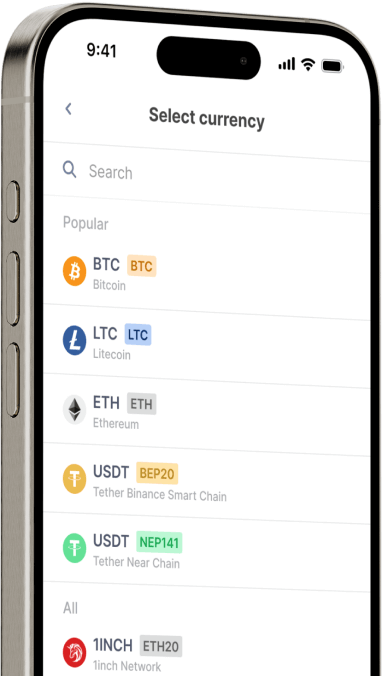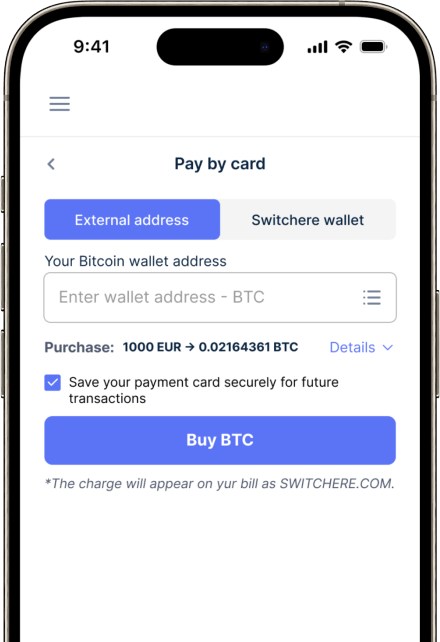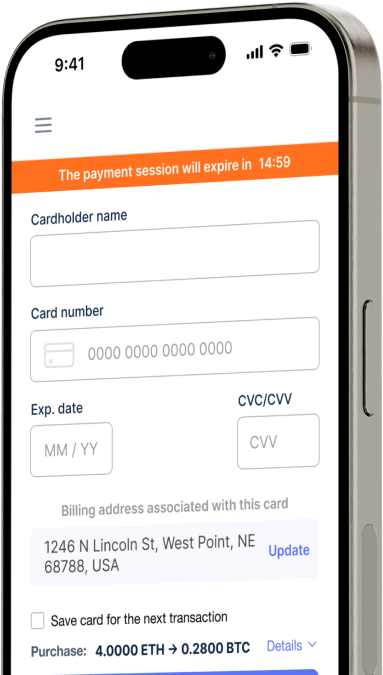Dönüştürmek
Costa Rican Colon (CRC)'dan Cartesi (CTSI)'ye aniden
Switchere'de Cartesi (CTSI) ile kolayca Costa Rican Colon (CRC) satın alın ve hızlı, güvenli işlemlerden yararlanın.
Hakkında
Cartesi (CTSI)
Cartesi (CTSI), blok zinciri ağlarındaki kritik hesaplama ölçeklenebilirliği ve yüksek maliyet sorununu çözmek için tasarlanmış bir Katman-2 altyapı platformudur. Sıklıkla "Blok Zinciri İşletim Sistemi" olarak anılan projenin temel amacı, merkezi Web2 benzerleriyle rekabet edebilecek karmaşıklıkta merkeziyetsiz uygulamaların (dApp'ler) geliştirilmesini sağlamaktır. Cartesi, geliştiricilerin ana akım programlama dillerini ve yazılım yığınlarını kullanarak tam bir Linux işletim sistemi ortamında akıllı sözleşmeler ve dApp'ler oluşturmasına olanak tanıyarak bunu başarır. Bu yaklaşım, Web2'den Web3'e geçiş yapan geliştiriciler için giriş engelini önemli ölçüde düşürerek, sağlam blok zinciri teknolojisi üzerine inşa edilmiş daha zengin ve daha güçlü bir dApp ekosistemini teşvik eder.
Platformun çekirdeği, yoğun hesaplamaları zincir dışında yürüten deterministik bir sanal makine olan Cartesi Makinesi'dir (CM). Optimistic Rollups'tan yararlanan Cartesi, bu karmaşık hesaplamaları harici olarak işleyebilirken, sonuçları Ethereum gibi temel Katman-1 blok zincirinde kriptografik güvenlikle sabitler. Bu hibrit model, zincir dışı işlemenin muazzam hesaplama gücünü, zincir içi bir dijital defterin doğrulanabilir güveniyle birleştirir. Yerel hizmet tokeni CTSI, ağın tokenomiklerinin ayrılmaz bir parçasıdır. Düğüm operatörlerinin ağı güvence altına alıp ödüller kazandığı Cartesi'nin Noether Proof-of-Stake (PoS) yan zincirinde stake etmek için kullanılır. CTSI ayrıca ekosistem içindeki hesaplama ve veri kullanılabilirliği hizmetleri için ödeme yöntemi olarak da işlev görür.
Diğer 150+ Kripto Para Birimlerini Costa Rican Colon (CRC) karşılığında satın alın
Costa Rican Colon (CRC) için Diğer Madeni Paralar
-
CRC için ZRX
-
CRC için 1INCH
-
CRC için AAVE
-
CRC için ACH
-
CRC için ALGO
-
CRC için TLM
-
CRC için ANKR
-
CRC için APE
-
CRC için NFT
-
CRC için API3
-
CRC için APT
-
CRC için ARPA
-
CRC için AUDIO
-
CRC için AVAX
-
CRC için AVAX
-
CRC için AXS
-
CRC için BADGER
-
CRC için BAL
-
CRC için BNT
-
CRC için BAT
-
CRC için BNB
-
CRC için BSW
-
CRC için BSV
-
CRC için BLUR
-
CRC için BONE
-
CRC için CTSI
-
CRC için CELR
-
CRC için CELO
-
CRC için CEL
-
CRC için LINK
-
CRC için CHZ
-
CRC için CHR
-
CRC için C98
-
CRC için COMP
-
CRC için CFX
-
CRC için PEOPLE
-
CRC için CVX
-
CRC için ATOM
-
CRC için CTC
-
CRC için CRV
-
CRC için DAI
-
CRC için DASH
-
CRC için MANA
-
CRC için DENT
-
CRC için DGB
-
CRC için DYDX
-
CRC için XEC
-
CRC için EOS
-
CRC için ETC
-
CRC için ENS
-
CRC için ETHW
-
CRC için FET
-
CRC için FIL
-
CRC için FLOKI
-
CRC için GALA
-
CRC için GNO
-
CRC için ONE
-
CRC için HBAR
-
CRC için HOT
-
CRC için HOOK
-
CRC için ICX
-
CRC için ILV
-
CRC için IMX
-
CRC için INJ
-
CRC için ICP
-
CRC için IOST
-
CRC için IOTX
-
CRC için JASMY
-
CRC için JST
-
CRC için KAVA
-
CRC için KCS
-
CRC için KSM
-
CRC için KNC
-
CRC için LDO
-
CRC için LQTY
-
CRC için LPT
-
CRC için LOOKS
-
CRC için LRC
-
CRC için LUNA
-
CRC için MKR
-
CRC için MASK
-
CRC için EGLD
-
CRC için ALICE
-
CRC için NEAR
-
CRC için XEM
-
CRC için NEXO
-
CRC için NOT
-
CRC için NMR
-
CRC için OKB
-
CRC için OMG
-
CRC için ONT
-
CRC için EDU
-
CRC için OP
-
CRC için OGN
-
CRC için CAKE
-
CRC için PAXG
-
CRC için PENDLE
-
CRC için DOT
-
CRC için POL
-
CRC için QTUM
-
CRC için QNT
-
CRC için RDNT
-
CRC için XRD
-
CRC için RVN
-
CRC için REN
-
CRC için RSR
-
CRC için RLC
-
CRC için RPL
-
CRC için SFP
-
CRC için SHIB
-
CRC için SKL
-
CRC için SXP
-
CRC için STND
-
CRC için STG
-
CRC için XLM
-
CRC için GMT
-
CRC için STORJ
-
CRC için STMX
-
CRC için SUSHI
-
CRC için SNX
-
CRC için USDT (Polygon)
-
CRC için USDT (AVAC)
-
CRC için USDT (BEP20)
-
CRC için USDT (ERC20)
-
CRC için USDT (SPL)
-
CRC için USDT (NEP141)
-
CRC için USDT (FA2)
-
CRC için USDT (TRC20)
-
CRC için USDT (JETTON)
-
CRC için XTZ
-
CRC için GRT
-
CRC için SAND
-
CRC için TFUEL
-
CRC için THETA
-
CRC için RUNE
-
CRC için TON
-
CRC için TUSD (BEP20)
-
CRC için TUSD (TRC20)
-
CRC için TWT
-
CRC için UOS
-
CRC için UMA
-
CRC için UNI
-
CRC için USDC (Polygon)
-
CRC için USDC (SPL)
-
CRC için USDC (OP)
-
CRC için USDC (BEP20)
-
CRC için USDC (AVAC)
-
CRC için USDC (ARB)
-
CRC için USDC (ERC20)
-
CRC için VET
-
CRC için VRA
-
CRC için WAXP
-
CRC için WOO
-
CRC için WLD
-
CRC için WBTC
-
CRC için WMINIMA
-
CRC için XDC
-
CRC için YFI
-
CRC için YGG
-
CRC için ZIL
Cartesi (CTSI) Nasıl Satın Alınır
Sıkça Sorulan Sorular
-
CRC/CTSI işlem çifti nedir ve neyi temsil eder?
CRC/CTSI çifti, Kosta Rika Kolonu (CRC) kullanarak Cartesi (CTSI) dijital varlığını satın almanızı sağlayan doğrudan bir fiat on-ramp'i temsil eder. Bu çift, önce CRC'yi USD gibi başka bir ana para birimine dönüştürmeye gerek kalmadan karmaşık dApp geliştirmeyi sağlayan 'The Blockchain OS' ekosistemine girmek isteyen Kosta Rika'daki kullanıcılar için çok önemlidir.
-
Cartesi'nin Katman-2 teknolojisi, CTSI satın alan bir kullanıcıya nasıl fayda sağlar?
CTSI alarak, Cartesi'nin Katman-2 altyapısına erişim kazanırsınız. Bu teknoloji, zincir dışı hesaplama için iyimser rollup'lar ve Cartesi Makinesi (bir Linux VM) kullanır. Bu, dApp'lerin ana blok zinciri dışında karmaşık hesaplamalar yapabileceği anlamına gelir, bu da önemli ölçüde daha düşük işlem ücretleri ve daha yüksek hesaplama ölçeklenebilirliği ile sonuçlanır ve ana akım yazılım yığınlarını kullanan geliştiriciler için cazip hale gelir.
-
CRC ile CTSI satın aldıktan sonra tokenları güvence altına almanın ve kullanmanın en iyi yolu nedir?
Güvenli depolama için, CTSI'nizi kripto para borsasından özel anahtarları kontrol ettiğiniz kişisel bir dijital cüzdana (örneğin bir donanım cüzdanına) aktarmanız şiddetle tavsiye edilir. Kullanım için, Cartesi'nin Noether PoS yan zincirinde CTSI stake ederek ekosisteme katılabilirsiniz. Stake etme, ağı güvence altına almaya yardımcı olur ve varlıklarınız üzerinden ödül kazanmanızı sağlar.
-
Kosta Rika Kolonu ile CTSI satın almanın yaygın yöntemleri nelerdir?
Büyük borsalarda doğrudan CRC/CTSI çiftleri nadir olsa da, kullanıcılar genellikle CTSI'yi iki aşamalı bir süreçle edinebilirler. İlk olarak, SINPE Móvil veya banka havalesi yoluyla CRC ödemelerini kabul eden yerel veya P2P bir borsada Bitcoin veya stabilcoin gibi büyük bir kripto para birimi satın alın. İkinci olarak, bu varlığı CTSI için yüksek likiditeye sahip bir borsaya aktarın ve işlemi tamamlayın. Kullanılan her platformda KYC/AML uyumluluğunu daima doğrulayın.
-
CRC'yi CTSI'ye dönüştürürken hangi ücretleri beklemeliyim?
Süreç birkaç potansiyel ücret içerir: 1) Borsa hesabınıza CRC yatırmak için bir para yatırma ücreti. 2) CRC'den kriptoya ve ardından kriptodan CTSI'ye işlemler için borsadaki işlem ücretleri. 3) CTSI'yi çekmek için ağ ücretleri (gaz), çünkü Ethereum'da bir ERC-20 tokenidir. Dijital varlık alımınızı optimize etmek için her zaman farklı fiat ağ geçidi platformlarının ücret yapılarını karşılaştırın.
-
Cartesi neden geliştiriciler için 'Blockchain İşletim Sistemi' olarak anılıyor?
Cartesi, geliştiricilerin ana akım yazılım yığınları ve programlama dilleri kullanarak merkezi olmayan uygulamalar oluşturabileceği bir Katman-2 platformu sağladığı için 'Blockchain İşletim Sistemi' olarak adlandırılır. Cartesi Makinesi tam bir Linux işletim sistemi çalıştırarak blok zinciri dünyası ile geleneksel yazılım geliştirme arasındaki boşluğu doldurur ve böylece daha güçlü ve karmaşık dApp geliştirmeye olanak tanır.




